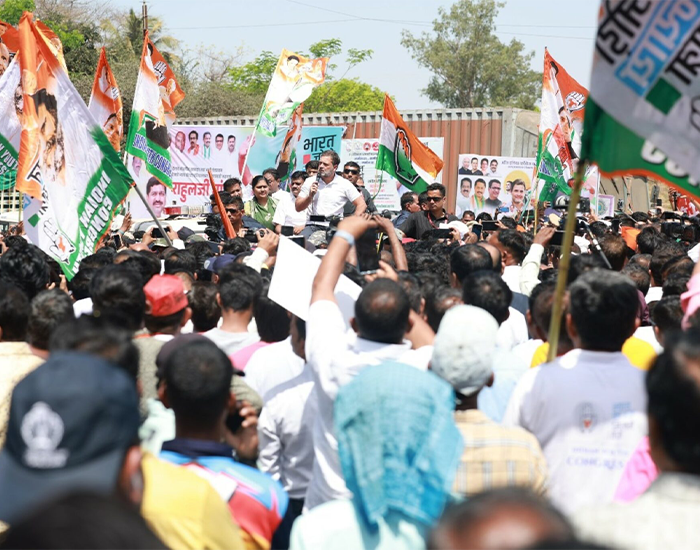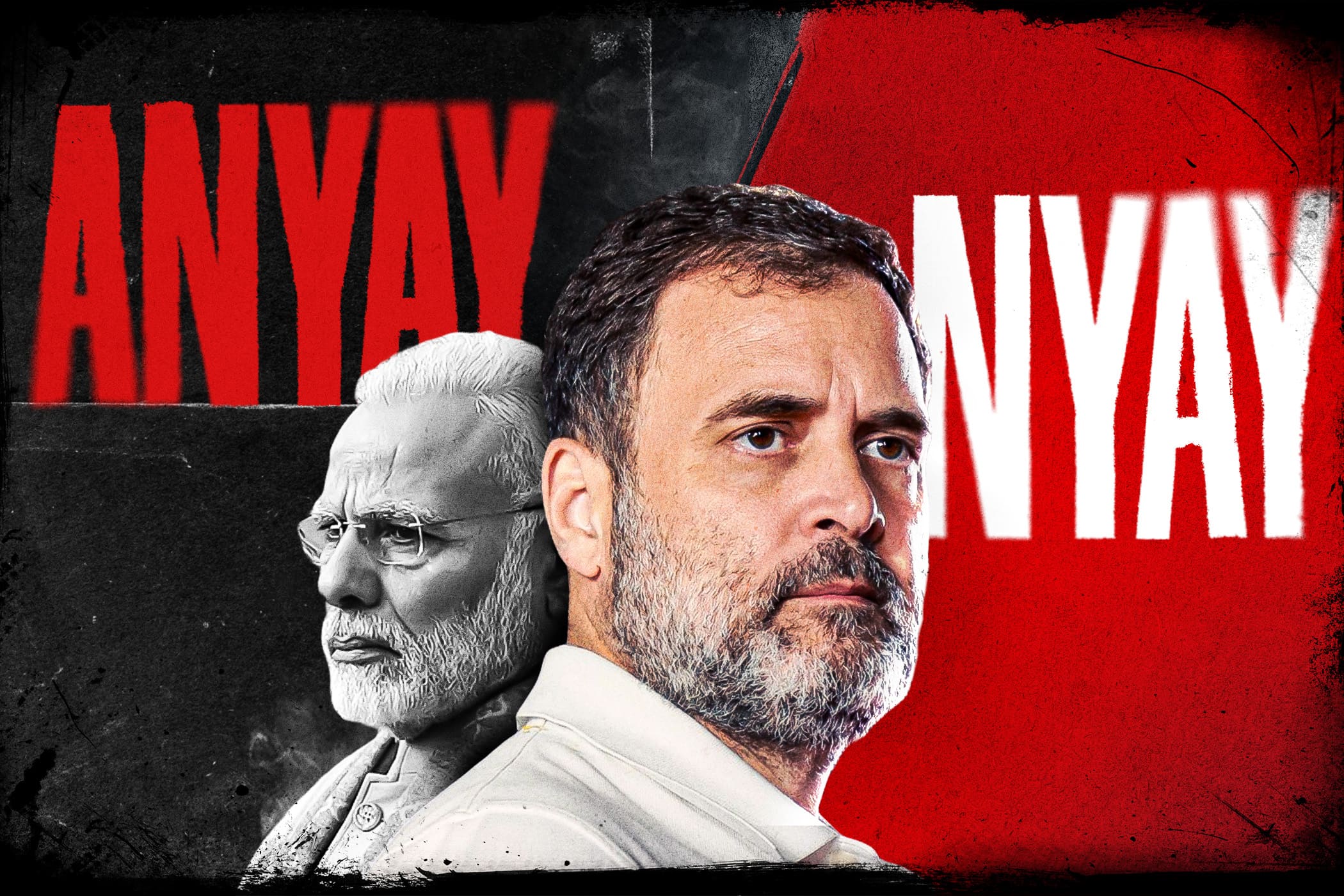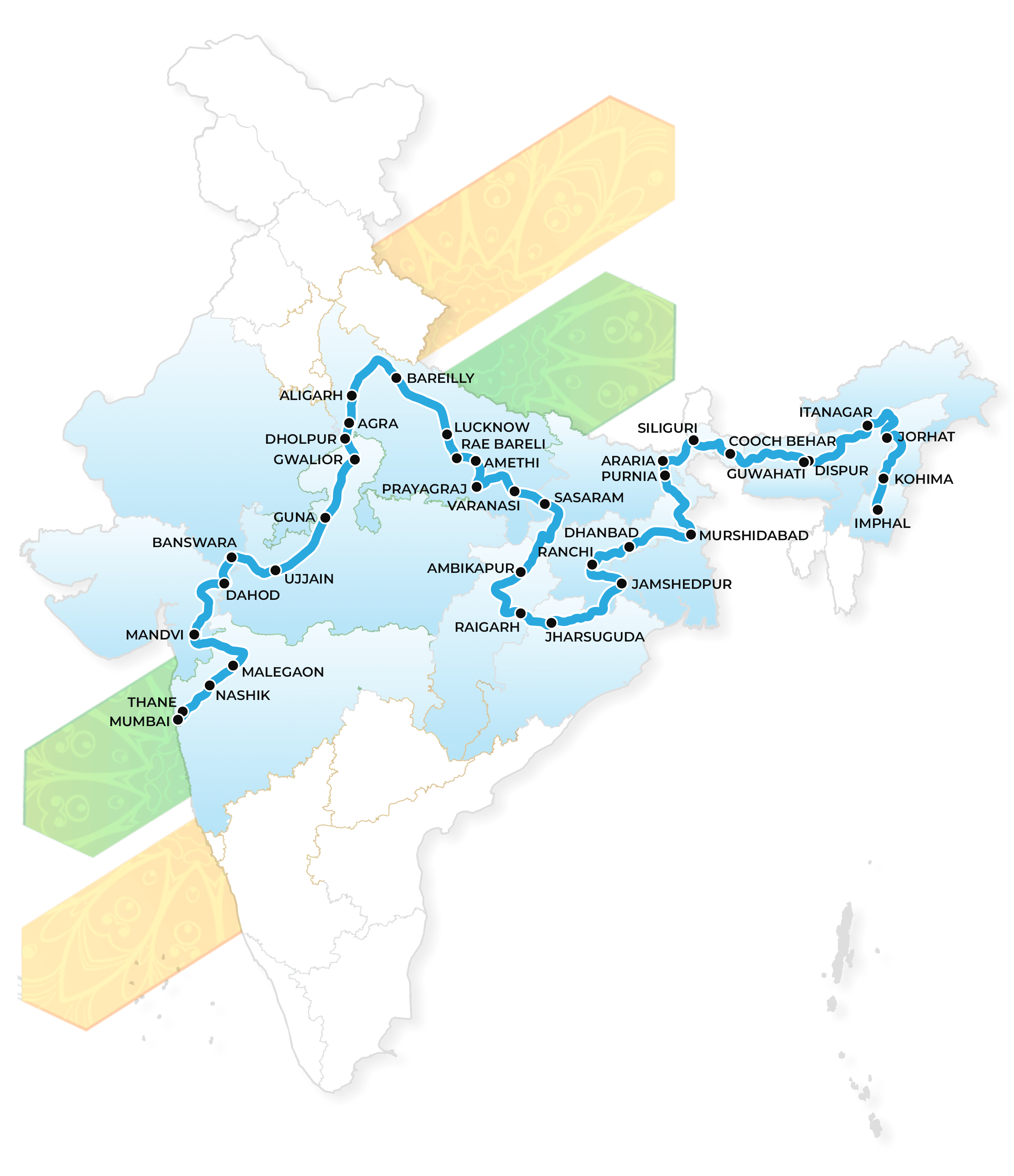
The NYAY Guarantees of the Congress Party are our promise to deliver a better life for every Indian - through a Rozgar revolution, putting more money in the pockets of the people, reducing their worries, and ensuring their voices are heard. These guarantees are a response to the voice of the people, and the pain which they shared with us during the 10,000+ kms we travelled across India during the Bharat Jodo Yatra and the Bharat Jodo Nyay Yatra.
The ten years of the Modi government's Anyaay Kaal has hurt all groups - the poor, labourers, farmers, women, youth, Dalits, Adivasis, backward communities and minorities. These groups form the vast majority of India - it is not surprising that the Modi-government has only helped the richest at the expense of the 90%. Today, the richest 10% of Indians own over 72% of the nation's total wealth, while the poorest 50% own just 3%. A few billionaires are given opportunities for enormous enrichment, at the cost of the common citizen who struggles for opportunities and to find a means of livelihood. There is a crisis across society and the economy.
Read Moreगैरकानूनी अधिग्रहण और आदिवासियों का दमन होने नहीं दूंगा | Rahul Gandhi | Jharkhand
MSP की Guarantee मतलब Kisaan को Fair Price की Guarantee | Rahul Gandhi | Bharat Jodo Nyay Yatra
Pulwama Attack: नहीं मिला शहीदों को न्याय | Rahul Gandhi
10 Saal Anyay Kaal Vs Paanch Nyay
Banaras Hindu University's Future at Stake: Professors Expose Modi's Agenda | Rahul Gandhi
बब्बर शेरों, जाग जाओ - कब तक अन्याय सहोगे? | Rahul Gandhi | Full Speech | Uttar Pradesh
Adani Power vs जनता का Power | Bharat Jodo Nyay Yatra | Rahul Gandhi
भारत की कोयला राजधानी की कहानी | Dhanbad | Bharat Jodo Nyay Yatra | Rahul Gandhi
ED Interrogation, A Tool Of Intimidation - नीतीश जी ऐसे ही भाग गए क्या? | Rahul Gandhi
अग्निपथ के विरुद्ध न्याय का अभियान - जय जवान | Bharat Jodo Nyay Yatra | Rahul Gandhi
Truck driver भाइयों से चौपाल पे चर्चा | Bharat Jodo Nyay Yatra | Rahul Gandhi
Blind Obedience? Why Resistance Matters for Indian Students | Bharat Jodo Nyay Yatra | Rahul Gandhi
अग्निपथ का अन्याय, पेंडिंग भर्ती पेंडिंग न्याय | Bharat Jodo Nyay Yatra | Rahul Gandhi
#PaanchNYAY जो मुट्ठी बन कर देश की ताकत बनेंगे | Press Conference | Rahul Gandhi
Assam has India's Most Corrupt CM | Brahmaputra Yatra | Rahul Gandhi
Nyay For Nari: Participation and Empowerment | Bharat Jodo Nyay Yatra | Nagaland | Rahul Gandhi

In the last ten years, every group of Indians has faced injustice and atrocities. The ten years of Narendra Modi government have been a decade of anyaay - injustice. We have seen anti-people policies, lies, undemocratic actions, repression and a divisive Godse-like agenda. The social, economic and political injustice has been faced by women, farmers, workers and youth, especially those from Dalit, Adivasi, backward, and minority communities. This injustice poses a serious challenge to the livelihood, progress, security, health, education, employment, representation and participation of 140 crore Indians.
Read More